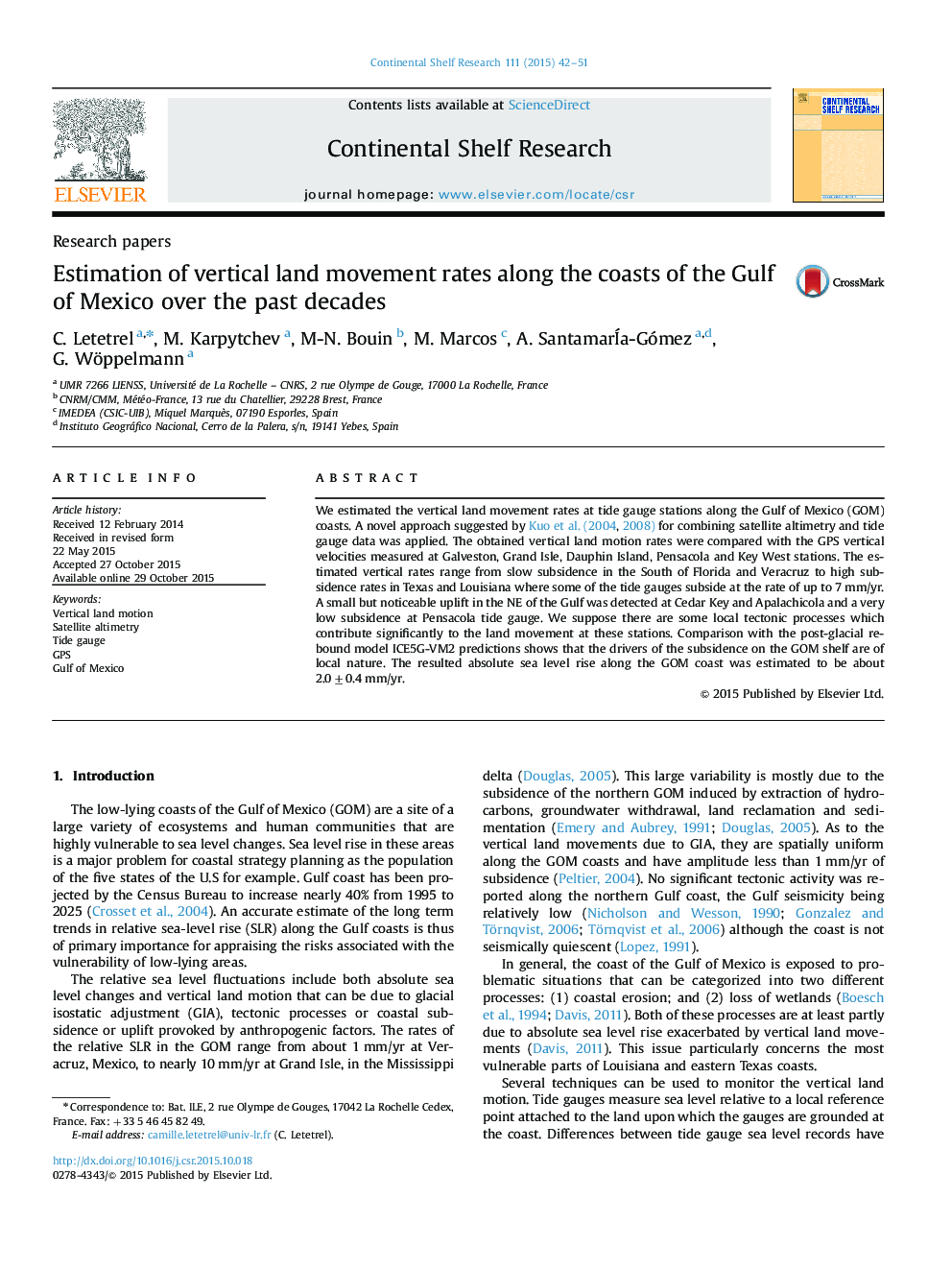| Article ID | Journal | Published Year | Pages | File Type |
|---|---|---|---|---|
| 4531633 | Continental Shelf Research | 2015 | 10 Pages |
•We used a novel approach suggested by Kuo et al. (2004, 2008).•We estimated the vertical land movement rates along the Gulf of Mexico coasts.•We compare the obtained vertical land motion rates with the GPS vertical velocities.•The results confirmed the high subsidence in Texas area.• The results also show slow subsidence in the South of Florida and Veracruz.
We estimated the vertical land movement rates at tide gauge stations along the Gulf of Mexico (GOM) coasts. A novel approach suggested by Kuo et al. (2004, 2008) for combining satellite altimetry and tide gauge data was applied. The obtained vertical land motion rates were compared with the GPS vertical velocities measured at Galveston, Grand Isle, Dauphin Island, Pensacola and Key West stations. The estimated vertical rates range from slow subsidence in the South of Florida and Veracruz to high subsidence rates in Texas and Louisiana where some of the tide gauges subside at the rate of up to 7 mm/yr. A small but noticeable uplift in the NE of the Gulf was detected at Cedar Key and Apalachicola and a very low subsidence at Pensacola tide gauge. We suppose there are some local tectonic processes which contribute significantly to the land movement at these stations. Comparison with the post-glacial rebound model ICE5G-VM2 predictions shows that the drivers of the subsidence on the GOM shelf are of local nature. The resulted absolute sea level rise along the GOM coast was estimated to be about 2.0±0.4 mm/yr.
